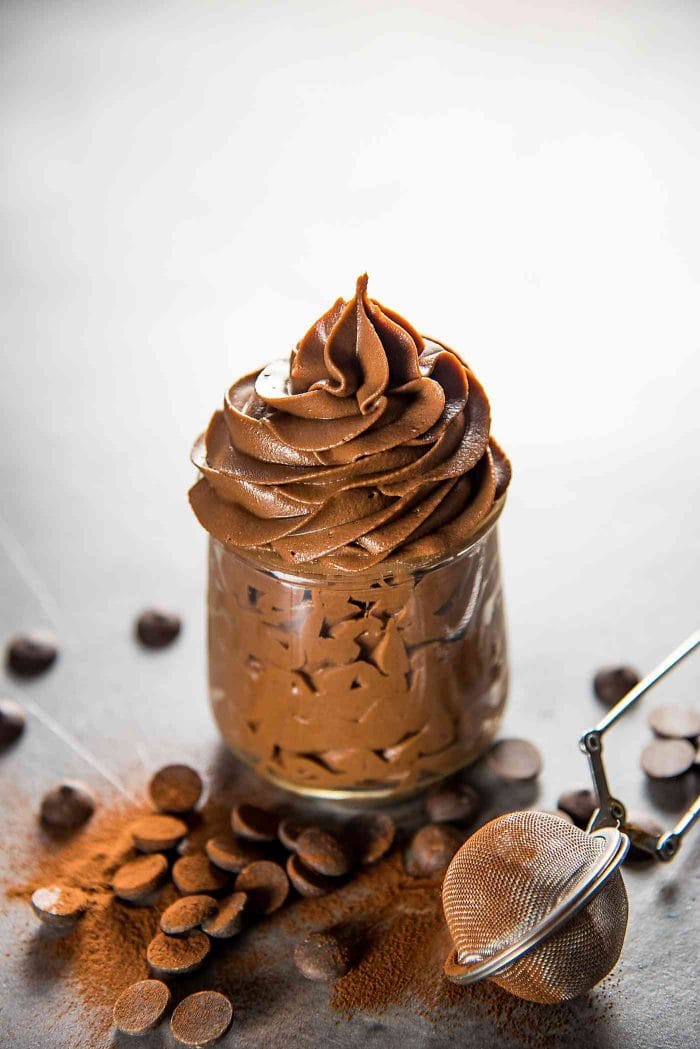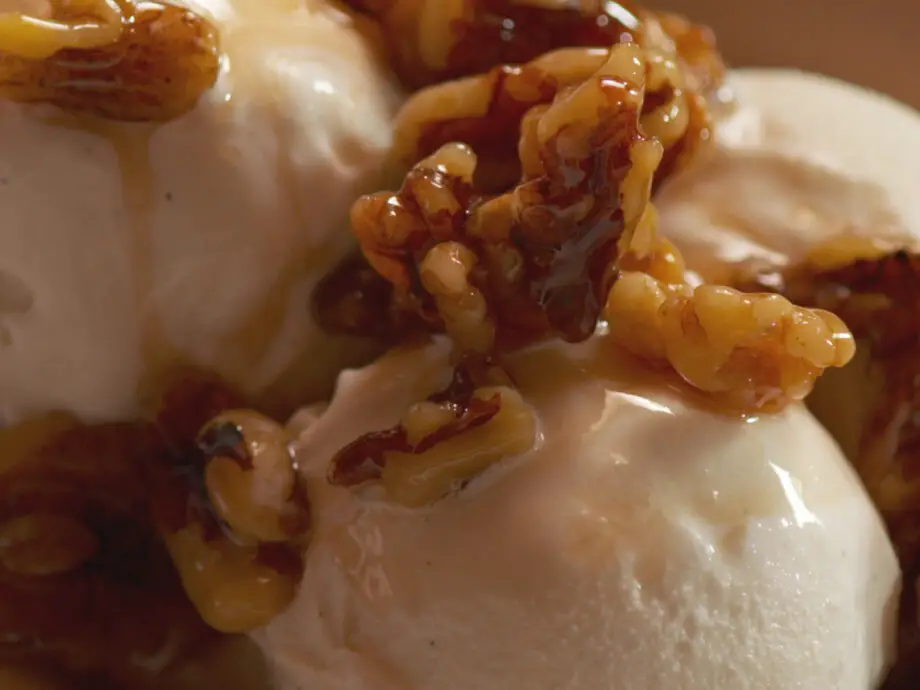Bavarian cream and custard are both rich and creamy desserts, but they have distinct differences. Bavarian cream is thickened with gelatin, giving it a lighter texture, while custard is thickened with eggs and has a richer taste.
In the world of delectable desserts, Bavarian cream and custard hold a special place. These two creamy delights have been tantalizing taste buds for centuries with their luscious textures and indulgent flavors. Understanding the differences between Bavarian cream and custard can help elevate your culinary creations and satisfy your sweet tooth with the perfect treat.
So, let’s delve deeper into the unique qualities that differentiate Bavarian cream from custard, and discover how each brings its own delightful twist to the dessert table.
Understanding Bavarian Cream And Custard
Bavarian cream and custard are two popular dessert components that are often used interchangeably. However, they have distinct characteristics that differentiate them when it comes to taste, texture, and ingredients. In this blog post, we will delve into the definition of Bavarian cream and custard, the ingredients used in each, and the key differences between them.
Definition Of Bavarian Cream And Custard
Bavarian cream, also known as crème Bavaroise, is a classic French dessert with a smooth and creamy texture. It is made by combining flavored custard with gelatin and whipped cream to create a light and airy consistency. On the other hand, custard, or crème anglaise, is a rich, thickened dessert sauce made from a mixture of milk, eggs, sugar, and flavoring. The key distinction lies in the incorporation of gelatin and whipped cream in Bavarian cream, resulting in a more luxurious mouthfeel.
Ingredients Used In Bavarian Cream And Custard
| Bavarian Cream | Custard |
|---|---|
| Gelatin | Eggs |
| Whipped cream | Milk |
| Flavored custard | Sugar |
| Flavoring |
When comparing the ingredients, it is evident that Bavarian cream incorporates gelatin and whipped cream, whereas custard mainly relies on eggs, milk, and sugar. This distinction leads to a significant contrast in the textures of the two desserts, with Bavarian cream being lighter and custard being denser and more substantial.
Variations And Flavor Profiles
Bavarian cream and custard are both decadent, creamy desserts that have been delighting taste buds for centuries. When it comes to variations and flavor profiles, these two delights have their own unique qualities to offer. Let’s explore the different variations of Bavarian cream and custard, as well as their distinctive flavor profiles.
Different Variations Of Bavarian Cream And Custard
Both Bavarian cream and custard come in various forms and flavors, allowing for endless delicious possibilities. Here are some different variations of each:
- Bavarian Cream Variations:
- Traditional Vanilla Bavarian Cream
- Chocolate Bavarian Cream
- Fruit-Infused Bavarian Cream (e.g., strawberry, raspberry, or orange)
- Coffee or Espresso Infused Bavarian Cream
- Alcoholic Bavarian Cream (e.g., rum or liqueur-infused)
- Custard Variations:
- Classic Vanilla Custard
- Chocolate Custard
- Butterscotch Custard
- Coconut Custard
- Lemon or Citrus-Flavored Custard
Flavor Profiles Of Bavarian Cream And Custard
The flavor profiles of Bavarian cream and custard are unique and indulgent, making each a delightful dessert experience. Here’s a glimpse into the flavor profiles of both:
| Bavarian Cream | Custard |
|---|---|
| Smooth and velvety texture | Creamy and rich consistency |
| Rich vanilla flavor with a hint of sweetness | Luxurious vanilla notes with a luscious custard taste |
| Subtle variations with fruit or liquor-infused options | Varied flavors with chocolate, butterscotch, or citrus-infused options |
Preparation And Cooking Techniques
Bavarian cream and custard are two popular dessert components that add a touch of indulgence to various sweet treats. When it comes to these delightful treats, the preparation and cooking techniques play a crucial role in determining their final texture and flavor. Let’s delve into the specifics of how Bavarian cream and custard are prepared and cooked to bring out their distinct qualities.
The Process Of Making Bavarian Cream
The process of making Bavarian cream involves several steps that contribute to its smooth and light texture. To create this delectable dessert, a creamy mixture of milk, sugar, and egg yolks is heated gently. After that, gelatin is added to provide stability to the mixture. Then, the mixture is allowed to cool before being carefully folded into whipped heavy cream. This creates the signature airy and mousse-like consistency of Bavarian cream. To further enrich the flavor, vanilla extract or other flavorings can be incorporated into the mixture before chilling it to set.
Cooking Techniques For Custard
When it comes to custard, the cooking techniques are crucial in achieving the desired creamy and silky texture. The basic ingredients for custard include milk, egg yolks, and sugar. To prepare the custard, the milk is heated and combined with the sugar until it dissolves. Then, a small portion of this mixture is slowly poured into the beaten egg yolks, which helps to temper the eggs and prevent them from curdling. Once tempered, the egg yolk mixture is gradually added back into the hot milk while continuously stirring to ensure a smooth consistency. The custard is then gently cooked over low heat until it thickens enough to coat the back of a spoon. It’s important to avoid overheating the custard to prevent curdling and ensure a velvety texture.
Texture And Consistency
When it comes to the delightful world of desserts, the debate between Bavarian cream and custard is a topic that often arises. One of the key aspects that sets these two delectable treats apart is their texture and consistency.
The Texture Of Bavarian Cream
Bavarian cream is characterized by its smooth and velvety texture. This luscious dessert has a light and airy consistency that simply melts in the mouth. It is often described as being luxurious and indulgent, with a delicate silkiness that is truly satisfying.
Consistency Of Custard
On the other hand, custard boasts a rich and creamy consistency that is thick and luscious. Its velvety smooth texture is complemented by a slightly firmer feel, making it a comforting and satisfying dessert option. The custard is known for its ability to beautifully coat the palate, leaving a delectable aftertaste.
Culinary Uses And Pairings
Bavarian cream and custard are classic dessert components that add a touch of luxury and indulgence to countless sweet treats. Understanding their culinary uses and ideal pairings can elevate your dessert offerings and bring a sophisticated touch to your culinary creations.
Culinary Uses Of Bavarian Cream And Custard
Bavarian cream, a delicately smooth and velvety dessert, is a versatile component that can be used in numerous ways. It is often employed as a filling in cakes, pastries, and donuts, adding a luscious and creamy contrast to the surrounding textures. It can also be molded into various shapes and used as a standalone dessert, showcasing its luxurious texture and flavor. On the other hand, custard is commonly used as a base for desserts, such as crème brûlée and bread pudding, as well as a filling for tarts, eclairs, and cream puffs. Its rich and creamy texture serves as a perfect complement to a wide range of dessert applications.
Ideal Pairings For Bavarian Cream And Custard
When it comes to pairings, Bavarian cream shines when coupled with fruits such as berries, peaches, and apricots, as their tartness balances the cream’s richness. It also pairs exceptionally well with chocolate, enhancing the decadence of both components. Additionally, it can be served alongside light and crisp pastries to create a delightful contrast in textures. On the other hand, custard pairs beautifully with warm desserts such as apple pie, where its velvety consistency adds a luxurious component to the dish. It also complements the flavors of caramel, nuts, and warm spices, bringing out their depth and richness. Moreover, custard can be used as a base for trifles, layered with sponge cake and fruits to create a harmonious medley of flavors and textures.

Credit: www.theflavorbender.com
Frequently Asked Questions Of Bavarian Cream Vs Custard
What Is The Difference Between Bavarian Cream And Custard?
Bavarian cream is a light, fluffy dessert made with gelatin and whipped cream, while custard is a rich, creamy dessert made with eggs, milk, and sugar. The main difference lies in their ingredients and consistency.
Can Bavarian Cream Be Used As A Substitute For Custard?
No, Bavarian cream and custard have different textures and flavors, so they are not direct substitutes for each other in recipes. Bavarian cream’s light and airy texture contrasts with the creamy richness of custard, resulting in distinct flavors and mouthfeel.
Are Bavarian Cream And Custard Desserts Gluten-free?
Both Bavarian cream and custard can be made gluten-free by using gluten-free thickening agents and ingredients such as cornstarch or gluten-free flour. However, it’s essential to carefully select gluten-free ingredients to ensure the desserts are safe for individuals with gluten sensitivities.
Conclusion
If you’re torn between Bavarian cream and custard, remember that both offer deliciously rich textures and flavors. Understanding the differences can help you choose the perfect match for your desserts. Whether you prefer the lightness of Bavarian cream or the classic richness of custard, both options bring a delightful touch to any sweet dish.
